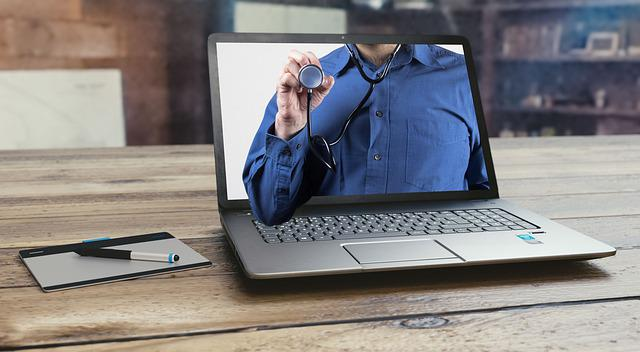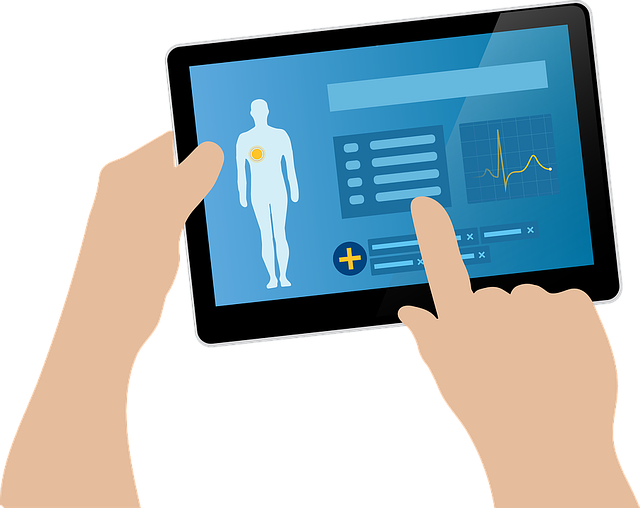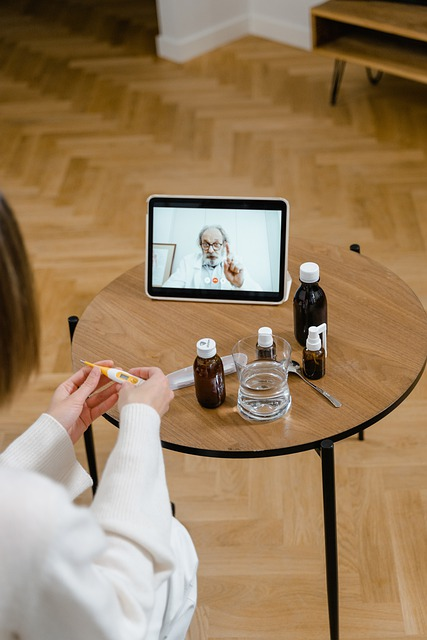Telehealth Services and the rise of Digital Healthcare
During the pandemic, physical restrictions prevented many patients from accessing basic healthcare services. The limitations and social distancing protocols placed major risks on the healthcare needs of patients who required constant medical attention. Due to the limitations, the concept of telehealth services gained popularity. Though it was not necessarily a product of the pandemic, many healthcare professionals believe that this new form of the healthcare delivery is going to continue to grow and evolve long after the pandemic.
Read on to find out more about what telehealth is and why it has become a primary choice for the delivery of health services nowadays.
What is Telehealth?

Technology has transformed modern lives in significant ways. Its impact is felt in the most basic things such as communication and buying groceries online, to the more complex ways like health and the ability to save human lives. Many people heard about the concept of telehealth during the pandemic but it has been around for some time before that.
The best way to define telehealth is the use of communication technologies and digital information to provide access to and manage health care remotely (or virtually). Several communication technologies can be utilized for this purpose, including the computer, smartphones, and other mobile devices and tools such as health apps and basic telehealth technology.
Access to telehealth technology and communication devices facilitates the delivery of telehealth services to those who do not have access to healthcare professionals in their area or are unable to visit in person for some reason. Telehealth services can be provided to deliver additional health care support or to provide essential management of diseases.
There are numerous goals for providing health care services using digital means, such as the following:
- Provide access to health care services for those who do not have immediate access to health professionals and facilities in their area.
- Ensure the safety of patients who have difficulty travelling to and from healthcare facilities or clinics.
- Provide access to specialized medical services not available in local or nearby facilities or clinics.
- Facilitate the coordination of treatment plans to ensure patients follow through with their care plan.
- Support the management of health conditions at home.
Components of Telehealth Services
Telehealth is a broad term that covers a variety of essential to advanced healthcare services to patients who need them. Below is a detailed look into the most basic components of telehealth services.
Virtual Visits
Virtual health visits are the most notable features of telehealth and telemedicine. Many clinics and health care professionals opted to make virtual visits available to their patients in response to the limited access to quality medical care, especially for those from rural locations with no access to speciality care and primary care physicians.
A virtual visit is available to patients suffering from all kinds of conditions and chronic diseases. Virtual care is the replacement when in-person care is not possible, regardless of the reasons. It became widespread during the Covid-19 pandemic when many clinics opted to close to avoid physical contact and the risk of spreading the virus. Patients can access clinical services through virtual care services, which include but are not limited to a physical exam, virtual health monitoring, and more.
Patient Portal
Many of the healthcare clinics offering virtual health consultations also have an online patient portal. A patient portal is part of the healthcare system implemented by doctors with telehealth services. It is part of the commitment to improving patient care because of easy access to relevant information that is directly related to the patient health information.
For example, a patient portal can be used to directly message the health care staff about questions or when setting an appointment for in-person care or virtual health consultation. It can also be used to store patient health records like test results and a summary of earlier visits. You can also use this portal to ask for refills of prescription medications, etc.
Remote Patient Monitoring
Remote monitoring is another integral component of a telehealth system. The remote monitoring of patients enables the health care provider to check the status of a patient’s health system using web-based or mobile apps. For example, this will allow them to keep track of a patient’s food logs, medication schedule, health care appointments, etc.
This can also involve monitoring home devices recommended for patients and other devices that are relevant to the overall health care plan. With these tools and health systems in place, doctors can monitor patients remotely and it can offer many potential benefits.
Mobile Health

The developments in telehealth technology also gave rise to mobile health apps and tools. Nowadays, it seems as though there is an app for almost all aspects of life and health is no exception. There are mobile health apps that make it easier for patients to increase access to relevant medical education.
For example, apps can be used to store electronic health records of patients, track vital signs, medication reminders, and other basic health information such as the number of steps per day. Not only are mobile health apps relevant for remote monitoring of patient health conditions, but also essential in preventive care.
Electronic Health Record
Maintaining electronic health records is one of the ways to improve health outcomes and promote medical education among patients. This health system contains all the vital information you need about your health condition and treatment plan. You can access this wealth of information using any mobile device and with internet access.
This personal health record is useful during public health emergency cases, or during urgent care visits. Your healthcare provider can pull your medical records and history to make a correct analysis of your condition, thus impacting the quality of patient care provided.
The Growth of Telehealth and Digital Healthcare
This might be surprising to many but telehealth started way back in the 1960s. In the last five decades or so, there were many barriers that limited the growth and expansion of digital and telehealth services in the medical field. These barriers included financial, technological, and regulatory standards. However, it wasn’t until the Covid-19 pandemic that healthcare reforms were welcomed with open arms and it created a shift in perception among healthcare organizations, providers, and patients.
The initial years of telehealth were plagued with limited digital infrastructure. Since telehealth relied heavily on technology, those limitations proved significant to limit the scope of these services. The 20th century was a major turning point for the growth of telehealth. The expansion and improvement of telephone network capabilities helped expand the potential of telehealth. By 2010, the proliferation of broadband services and internet access transformed telehealth to become what it is known now.
The internet not only made remote patient monitoring possible, but it also opened up new opportunities to deliver more efficient health services. For example, it made the transfer of large data possible with incredible internet speeds. It also allowed medical professionals and other providers to obtain medical equipment at a lower cost. And the most evident benefit of telehealth is remote patient monitoring, which is made possible by communication tools and mobile devices.
It became quickly evident that the internet is the fuel that will help in the rise of telehealth as more than just the alternative method to receive health care. More people embraced the use of the internet for medical education and primary care needs. Indeed, it is now possible for patients to research information from their computers or mobile devices.
The internet made it readily available for doctors and patients to stay in communication with each other, even without requiring in-person visits. This is made possible with the advancement in telecommunications technology. Appointments can be done via a mobile app and patient records were kept in an electronic facility, which greatly reduces the burden on the staff to handle the paperwork.
The Covid-19 pandemic era was a huge leap forward for the telehealth industry. It prompted the rapid digital transformation in providing health services and opened up more opportunities in telehealth that many never thought possible. As technologies continue to develop, there will be a continued systematic review of the existing implementation schemes and identification of major barriers to the expansion of virtual visits and digital health care to aim for the continued improvement of telehealth solutions.
Importance of Digital Health
Telehealth use continued to expand even after the height of the Covid-19 pandemic. Since then, it has stabilised with sharp growth in some areas, particularly those that were new to the adoption of telehealth services and technologies. The mindset about telehealth changed from being offered out of necessity to being used as a point of a solution that drives growth and opportunities.
Digital healthcare systems and telehealth will be of vital importance because it’s not just about the tools and technologies. It will incorporate modern capabilities such as artificial intelligence (AI), big data, machine learning, and secure platforms that will be consumer-focused and designed to encourage preventive care. Technologies and these digital tools will change how patients view health services from here on out.
Telehealth is just one aspect of digital healthcare. The latter is more extensive because it often employs AI, higher use of health apps for remote patient monitoring, and some other advanced developments. The advancement in technology will also make research and development possible. It’s now possible to develop new vaccines to fight diseases in a shorter amount of time than it took a decade or so ago. Meanwhile, telehealth technologies will also allow more accurate diagnosis and treatment choices for higher patient satisfaction.
According to this research, the digital health and telehealth market will experience a compound annual growth rate of 27.9% until 2027. By then, the digital health market will be valued at 883 Billion USD. The research firm believes that the increased availability of mobile health apps is one of the biggest contributors to its growth. These apps empower patients through patient education and self-management of their illness through monitoring of vital signs like blood pressure and blood sugar levels at home.
The potential benefits of telehealth signal that it’s just the start of an era. Covid-19 highlighted the importance of virtual health services but it also paved the way for a new transition to wide adoption of telehealth usage across the globe.
Examples of Digital Health and Telehealth Technology

Healthcare and technology go hand in hand in bringing cost savings, higher efficiency, accuracy in delivering health care, and saving time in providing telehealth solutions. The technologies have transformed health care in ways that many haven’t seen before.
Below are some of the best examples of telehealth that are currently available to patients and what we can expect in their future developments.
1. Mobile Healthcare Apps
Let’s start with the most obvious example of telehealth applications nowadays. With more people relying on their smartphones to communicate, find information, and connect with people and healthcare providers, the emergence of mobile healthcare apps is inevitable.
There are various types of healthcare apps available for mobile users, such as those intended for monitoring, keeping track of personal health data, and for contacting their doctors for urgent care needs. Medical education is at the forefront of these apps that empower users to take control of their health management, which in turn produces engaged patients. There is a sizable growth opportunity for this market and app developers are taking full advantage of that potential.
2. Healthcare IoT
The Internet of Things is no longer limited to making homes smart and comfortable for homeowners. Connected healthcare devices make it easier for patients to obtain medical education and knowledge, which were unavailable years before. Health experts and researchers are also pushing toward making all health devices and equipment connected – this is seen as a solution to delivering better and more efficient health care.
As technology continues to evolve, it is only a matter of time until these connected healthcare devices experience more innovations, too. Among the features that deliver value to the healthcare system include improved tracking of inventory and patients, enhanced medical drug management, fast-paced diagnosis, faster processing of patient health information, and improved access to critical medical hardware, to name a few.
3. Big Data Analytics
Due to the innovation in healthcare technology, it also translates to more data available to medical practitioners and staff. Processing such a huge amount of data can be overwhelming. One of the best examples of digital healthcare technology and telehealth solutions involves big data analytics. This makes it possible to segment big data analysis into various categories for easier fetching and processing of vital data needed for a specific purpose.
It also provides data-driven insights that allow health professionals to deliver timely and accurate treatment and care for patients. This is also beneficial for medical researchers who must process an overwhelming amount of data relevant to their research activities.
4. Electronic Health Records (EHRs)
Electronic health records (EHRs) are one of the most notable examples of digital healthcare and telehealth technologies. It is more than just the ability to store patient data and health information electronically. This tool can also be used to improve the quality of patient care and for the delivery of more coordinated and efficient care.
The following are some of the notable benefits of maintaining electronic health records:
- Accurate and updated information at every point of care
- Quick access to patient records
- Secure and easy sharing of patient information
- Reduced medical errors and accurate diagnosis
- Easy communication and improved patient interaction
- Improved productivity and ease of burden for healthcare staff
- Reduced costs involving paperwork and record keeping
- Complete and detailed documentation of patient records, faster and more efficient billing
- Secure and reliable prescription of patient health information
- Privacy and security of patient health information
5. Wearable Devices
Wearable technology is a booming market in the healthcare industry. It is also one of the best examples of digital health care. It started with fitness trackers and then completely evolved into a new arm of healthcare technology focused on real-time patient monitoring for vital signs and chronic diseases.
The wearable devices available these days are far more powerful in scope and capabilities than the ones that were initially available. They not only track your heart rate or the number of steps you had per day but the current wearable devices for healthcare are also built with artificial intelligence. These devices can now predict or aid in the diagnosis of diseases, according to symptoms and vital signs of health. They can also be used as aids for health recovery.
The potential is big for wearable technology in healthcare, especially for patient data collection for more accurate diagnosis, treatment, and health monitoring. Therefore, many companies are investing in the development of this technology to achieve greater efficiency.
6. Telemedicine
Telemedicine is one of the most popular tools currently available in the telehealth industry. The experts estimate that telemedicine will be valued at 40 Billion USD by 2021.
Telemedicine apps have transformed how healthcare providers communicate and interact with patients, which increases engagement, patient education, and patient satisfaction. These apps have eliminated the major barriers to health such as limited access to urgent care and geographic distance (for patients living in rural areas).
Many patients turn to telemedicine apps for regular care with their primary care physician rather than opting for an in-person visit to their provider’s office.
Strategies for Quality Telehealth Services
The adoption of telehealth is not the only aspect of it that is rising. The investments made toward improving telehealth solutions and technologies are also on the rise. It is important to develop potent strategies to ensure the highest quality of services when committing to telehealth as part of your organisation’s offerings.
Indeed, telehealth is more than just a nice-to-have but a necessity in most healthcare organisations now. With this in mind, make sure you have a solid strategy in place for its implementation to ensure that you can succeed with your organisational objectives.
1. Prioritise Patient Feedback
When using a mobile app, they are often equipped with a survey feature that allows you to rate the app based on its performance. This approach of gathering patient feedback can be utilised in your telehealth services and systems. It’s important to gather feedback from patients who will be directly using your services to ensure that you can make the necessary tweaks or improvements.
The goal is to use insights from the actual users to ensure that you can address their needs. You should also encourage qualitative feedback from patients so you can get a more concrete solution to common issues encountered when using your telehealth system.
2. Make Accessibility a Priority, too
Improving patient satisfaction is one of the primary reasons why telehealth continues to grow. This new method of healthcare delivery has provided convenience and benefit to patients with disabilities or who are differently-abled too.
In the telehealth industry, it is not uncommon to deal with patients suffering from all kinds of disabilities. When developing solutions to provide improved healthcare to patients, make sure that you prioritise accessibility. For example, you should employ assistive technology to interpret written content for patients who have vision issues.
3. Consider Internal Users
Many telehealth strategies focus entirely on patients and tend to overlook that they are not the only ones who are using them. The healthcare staff and workers are also important considerations when developing telehealth strategies. Make sure that your existing strategies deliver value to the internal users as employee experience is integral in making sure that patients are also taken care of and their needs are met.
Take time to survey or gather insights from your employees. Use their insights to help improve your current systems and incorporate that to deliver increased efficiency and usability.
Barriers to Telehealth Services
Telehealth opens up new doors of opportunities for the industry when it comes to delivering coordinated patient care. However, it is still relatively new and there are many areas that require polish. It is important to identify the barriers to successful healthcare delivery to allow patients to maximize the benefits of telehealth tools and technologies.
The following factors can limit the potential benefits of telehealth and some of the ways that they can be addressed.
Infrastructure
For patients to benefit from telehealth, they need to have access to it. The lack of technological infrastructure immediately stands out as one of the biggest barriers to telehealth. The basic technological needs for patients to benefit from telehealth include internet connectivity and devices to stay connected (such as computers, smartphones, and mobile devices).
In the UK, this is not such an issue because 96% of the population has access to the internet. However, the UK is a special case because it has the highest household internet penetration rate in the world. The rest of the world isn’t the same case because there are some areas, particularly those in rural communities, with limited internet access. There are some that rely only on cellular data for internet connectivity.
To be able to expand on the benefits and innovations of telehealth, it is important to focus on improving technological infrastructure and access to the infrastructure. This will ensure that the patients who it intends to serve to have access to them.
Digital Literacy
For those patients that do have access to the internet, the lack of digital literacy or knowledge on how to use the technology is another barrier. The issues with digital literacy bring about a host of other issues such as privacy concerns and a lack of trust in the system. Patients are uneasy about the data storage and access to their personal and health information. This is a legitimate concern, though, given that cybersecurity threats are everywhere and they mostly target healthcare organizations.
In addition to the issues of privacy and security, the lack of digital literacy is also a barrier because patients don’t know where and how to access telehealth services. This concern is especially common among senior patients who do not feel tech-savvy enough and find it difficult to navigate modern technological apps and devices.
Language and Cultural Appreciation
Implementing digital healthcare and telehealth initiatives requires an appreciation of potential language barriers and cultural nuances – whether in relation to a local doctor providing telehealth services within a diverse community or to a global mobile health app with users spanning multiple countries. To be truly accessible and effective, and to encourage patient engagement, communications have to be translated and localised so they can be understood by all who use them. Doing so helps healthcare professionals and organisations deliver the best possible multilingual patient care, even remotely.
Health Insurance

The lack of health insurance coverage among insurers is one of the barriers to telehealth growth. In addition to a lack of existing coverage policies, a lack of equitable reimbursement for those who obtain telehealth consultations with their healthcare providers is also a factor.
With the projected growth of telehealth, its proponents are hoping that it will also encourage insurers to include this type of service in their policies and coverage.
Preference for In-Person Visits
Despite the advancement in technology and the accessibility of various tools for telemedicine, one of the most difficult barriers to overcome is the patient preference toward in-person care. This is mostly true among older patients or seniors who thrive in the familiarity of seeing their healthcare providers in a clinic or traditional healthcare facility.
There is the existing notion that video visits do not provide the same quality of care and accuracy in diagnosing health conditions as they would in a traditional consultation. Even during the height of the Covid-19 pandemic, many patients were denied health services because they refused to utilize the telecommunications technology available to them to obtain the health care they needed.
When it comes to telehealth, one size does not fit all. The preference for in-person care could stem from the idea that telehealth is one particular solution that does not account for differences in needs, situations, and preferences. This is far from reality and calls for more education among patients about the processes of telehealth.
Ethical Concerns
There are numerous ethical concerns that stem from telehealth and telemedicine, which is proving to be a crucial barrier to its growth. Ethical issues are highly linked to technology. While technology has affected modern people’s lives in many positive ways, the convenience of sharing and receiving information has also shown its many pitfalls in the past. The improvement in communication technology coincides with healthcare delivery.
One of the key areas of ethical concern in telehealth is the patient-doctor relationship. The traditional form of healthcare delivery involves the patient and doctor discussing the patient’s health concerns and history. The in-person visit and care foster trust and empathy. In fact, the American Medical Association insists that in-person visits should still be the primary priority and that telehealth must be used only for patients and doctors with a pre-existing relationship.
Aside from the concerns about patient-doctor ethics, the threats to patient privacy are another potential ethical pitfalls to telehealth that are limiting its growth. The privacy concern is a legitimate one. As mentioned earlier, there have been many reports in the past of data breaches among healthcare organizations. This leads to apprehensions among patients and the ability of the health care organization to offer telehealth services and their ability to navigate these security issues.
Recommendations to Improve Telemedicine Access
Identifying the common barriers to telehealth is only the first step. The following are actionable steps that can be taken to enhance the delivery of these services.
- Make it easy for patients to access the telehealth platforms for their preferred providers by using a shared device (if individual devices are not possible).
- Conduct education and information dissemination programs to ensure that patients have the adequate knowledge and skills to participate in virtual and video visits with their providers. The goal is to make the most of every session and to improve the quality of health care given.
- Ensure continued access to health support even after patients have left the virtual session.
- Promote legislation that would expand support for telehealth and encourage insurers to provide coverage for this type of service.
- Develop a metrics system that will evaluate and track the current performance of the telehealth system. Use the insights gathered to make the necessary improvements.
- Ensure diversity, inclusion, and accessibility are top priorities.
Regulation Guidelines for Telehealth Services
The regulatory guidelines are a primary concern for the telehealth industry. Currently, the US Health Insurance Portability and Accountability Act of 1996 (HIPAA) was enacted to ensure the protection of patient health information and personal data. This act was amended in 2009 to incorporate the Introduction of the Health Information Technology for Economic and Clinical Health (HITECH) Act. This revision was designed to ensure stricter compliance with the HIPAA Act and to ensure that access to patient data is limited.
The HIPAA regulations are strictly enforced in the US and offending organizations are heavily penalized. Further revisions to the HIPAA Act were finalized in 2020 via the US Department of Health and Human Services. These changes are focused on delivering value-based care to ensure patient health.
In the UK, regulatory guidelines for telehealth and telemedicine had been established. However, there were significant changes following the Covid-19 pandemic. In 2020, during the peak of the pandemic, a report from the Royal College of General Practitioners indicated that 71% of the consultations were done virtually. This was a huge rise from the number of telehealth consultations before the pandemic, which was at 25%.
Despite this, the UK lacks specific laws and regulations that are designed to address telehealth and similar services. There are many organisations that regulate the implementation of telehealth in the UK but there is a lack of a unifying body.
What is the Future of Healthcare Technology?
For telehealth services to thrive and become the future of healthcare, it is important for people’s mindsets and perceptions about telehealth solutions to change. It isn’t a cheap knock-off of in-person medical care. It is equal. In fact, many health professionals agree that utilising telehealth technology offers more benefits than traditional methods of delivering healthcare services.
Using telehealth solutions deliver convenience, connectivity, and accessibility to patients’ lives in ways never seen before. It breaks down physical, geographical, and communication barriers to ensure that more people can access quality care from health professionals, including specialists.
The great thing about this is that technology is still evolving. Telehealth technology is also expected to evolve with it as it capitalises on the technological tools available to the healthcare and medical industry. The ever-growing telehealth field will expand with it. Below is a glimpse of the trends that will drive the future of the telehealth industry.
1. Telehealth services will become the new healthcare norm.
As of 2017, there are already 61% of hospitals in the US employ remote patient monitoring systems. Meanwhile, this report from an insurance company details that since 2005, they experience over 200 annual telehealth visits with their patients. As of 2017, the number of virtual visits grew to over 202,000!
These numbers point to one thing: telehealth services have now become widely accepted as part of the industry. The impressive thing about these statistics is that it indicates that the use of telehealth technology has been around before the pandemic. However, there is no denying that the pandemic contributed to the acceleration of the normalisation of this form of healthcare delivery.
2. Telehealth expands the clinical services that patients can enjoy.
The advancement in communication technology makes it easier for patients to access medical care wherever they are. For example, you can call a medical care hotline if you are looking for advice on a specific condition. There are also more advanced health services available for patients through electronic devices, such as mental health counselling, video conferencing with primary care physicians, analysis of lab results, and consultation for a broad range of health problems.
Based on the above, many of the health problems faced by patients do not require an in-person visit. Telehealth tools make it possible for these patients to get the medical care they need without stepping out of the house or going to a healthcare provider’s physical location.
3. Telehealth enables more accurate diagnosis and care.
The use of technology permits more accurate diagnosis and treatment options for patients who need them. Artificial intelligence (AI) is one of the technologies that healthcare providers and facilities employ to assist in basic to complex medical and healthcare services.
For example, AI technology can help with administrative tasks such as keeping and sorting medical records. They can also replace the services of triage nurses to deliver higher efficiency, especially in situations when there is a lack of manpower. But in the context of telehealth, AI can speed up the process of analyzing lab results and deliver reports with higher efficiency and lesser possibility of errors.
The use of telehealth tools and technologies benefits patients because they are committed to improving the current level of care that patients receive from their providers.
4. Telehealth makes medical care easier to access.
With the expansion of 5G services and better internet access capabilities in more areas worldwide, telehealth will become widely available to more people. You can use mobile devices such as smartphones or tablets to book a virtual visit with your preferred primary care physician or to get in touch with their medical staff if you have issues that need urgent care. Even if you live in rural areas that don’t have access to a modern facility or when in-person visits are not possible due to limited mobility, video conferencing technology guarantees that you will receive remote care from your provider.
Telehealth usage will continue to expand as advancements in internet access and communication technologies make improved access a reality.
5. Access to mobile health solutions for telehealth monitoring.
The improvements in telehealth tools and technologies make it possible for patients to improve health outcomes with self-management and monitoring. The success of a healthcare plan relies on the engagement of patients, not just on the quality of care available in a healthcare provider’s office. Mobile health solutions such as healthcare apps, fitness trackers, and other forms of wearable tech are part of the ever-expanding virtual health tools.
Along with patient education, it is now possible for remote monitoring of existing conditions possible as you can analyse data in real-time. For example, health-related mobile health apps provide crucial data about relevant readings, such as blood pressure, heart rate, blood sugar levels, etc.
Patient outcomes improve as a result of virtual health solutions that gather data and teach patients how to manage their lifestyles and symptoms without requiring urgent care visits.

